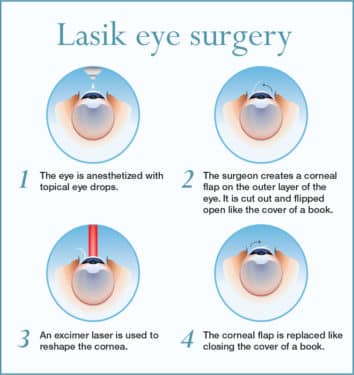As a cataract surgeon, your day begins with a comprehensive eye examination, where you evaluate individuals' vision and lens quality. You know exactly how crucial it is to identify cataracts precisely. When detected, 3 types of cataract surgery plan for surgical treatment, making certain every detail is accounted for. However the obstacle does not finish there. The actual journey unfolds in the operating room, where accuracy is crucial. What takes place following could specify a patient's aesthetic future.
The Diagnostic Refine: Identifying Cataracts
When it involves identifying cataracts, clearness is key. You'll start with a comprehensive eye assessment, where you'll evaluate visual acuity and look for any kind of indications of cloudiness in the lens.
During this procedure, you'll use customized tools, such as a slit lamp, to get a comprehensive sight of the eye's framework. You'll likewise carry out a dilated eye examination to review the lens and retina better.
Gathering your individual's case history is vital, as it aids recognize threat aspects like age, diabetes mellitus, or previous eye injuries.
After evaluating the outcomes, you'll identify the visibility and intensity of cataracts. This precise approach guarantees you supply the best suggestions for therapy, establishing the stage for the next action in their care.
The Surgical Procedure: Accuracy at work
After identifying cataracts and discussing therapy options, you prepare for the operation, where precision is extremely important.
You get in the operating room, wearing sterile handwear covers and a mask. The client rests easily under bright lights, prepared for the transformation.
You begin by carrying out regional anesthesia, ensuring they really feel no discomfort. With a stable hand, you make a tiny cut in the cornea, making use of sophisticated methods to remove the gloomy lens.
You carefully put the fabricated intraocular lens, straightening it flawlessly for optimum vision. Throughout the procedure, you monitor vitals and adjust as needed, keeping concentrate on the job.
In simply a short time, you'll have recovered your individual's view, a gratifying outcome for both of you.
Post-Operative Care: Making Certain Optimal Healing
Once the surgical treatment is full, your role shifts to making sure the individual's smooth recuperation.
You'll start by offering clear post-operative guidelines, stressing the relevance of wearing the eye guard and taking prescribed medicines. Advise them to avoid rubbing their eyes and engaging in arduous activities.
Arrange a follow-up visit within a couple of days to keep an eye on healing and attend to any type of concerns. Urge people to report any indicators of infection, such as raised soreness or discharge.
Furthermore, talk about the significance of using fabricated tears to reduce dry skin. is general anesthesia used in cataract surgery by comforting them that visual renovations may require time.
Conclusion
In a cataract specialist's day, you witness the journey from medical diagnosis to recuperation. You see the precision in surgical treatment and the care taken post-operation to guarantee your ideal recovery. Via this experience, you get clarity not simply in vision, yet in comprehending the entire procedure. The trust fund developed in between you and your doctor is important, leading the way for a smoother recuperation. With the appropriate support, you're on your way to enjoying a brighter, more clear globe.
